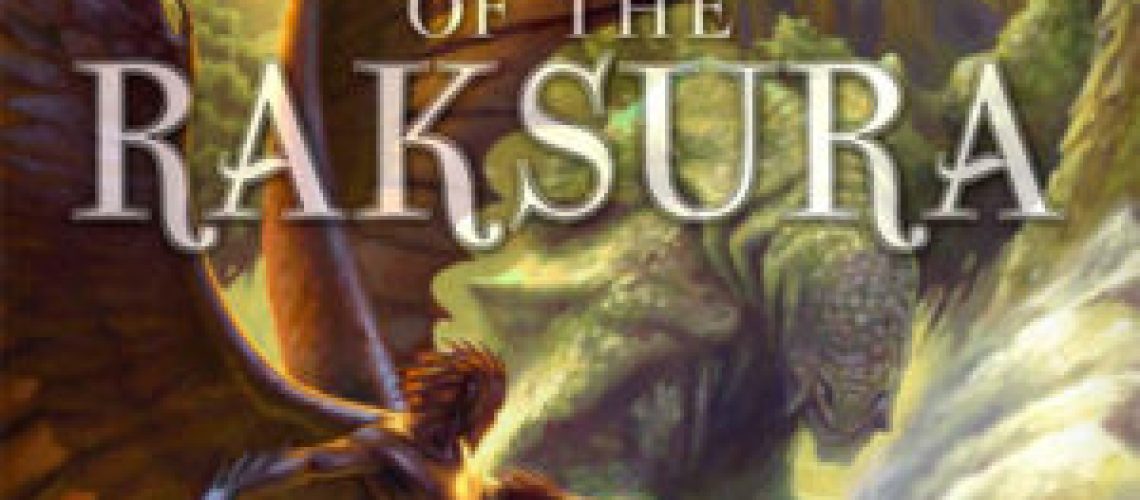Through three novels and a previous collection of stories (Stories of the Raksura Volume One: The Falling World and The Tale of Indigo and Cloud), Martha Wells has built up an ever richer tapestry of tales of the Three Worlds, focusing primarily on her alien, shapeshifting and yet all too human race of the Raksura. Stories of the Raksura Volume Two: The Dead City and The Dark Earth Below continues in that tradition. Within, Martha gives us the two titular novellas as bookends to the book, and three stories in between.
Also like the first volume, Wells gives us a variety of time frames in which the stories are set. Having contented herself with setting up the framework of Moon (our primary POV protagonist) in the three Raksura books (The Cloud Roads, The Serpent Sea and The Siren Depths), rather than always progressing the narrative forward in time, she has taken the tack of telling backstories, and side stories about the characters and the world. One of the stories, as detailed shortly, does not involve the Raksura at all. The richness of the peoples and creatures of the Three Worlds allows for amazing diversity in potential protagonists within and without of the Raksura themselves. The Raksura are her primary and overwhelming interest, and with good reason. However, there is nothing to prevent her from exploring other corners of her world.

The Dead City, the opening novella, is a story of Moon that takes place before the events of The Cloud Roads. As detailed in The Cloud Roads, and in “The Forest Boy” (in Stories of the Raksura Volume One), Moon has already had a slew of adventures long before his grandfather Stone finds him and brings him to his Raksura court. The Dead City, however, gives readers the deepest look yet into the life and attitudes of Moon as, David Banner style, he wanders the Three Worlds looking for a place to fit in, and never quite managing to do so. The Dead City is a story of a caravanserai where he stops off during his wanderings, and dark and strange doings at a lost city up in the hills. Moon finds himself wrapped up with a conflict between two races, the disposition of lost property, and another beat on his search for acceptance and understanding.
Mimesis and Trading Lesson are two short stories set between The Siren Depths and The Serpent Sea. Short tales, with a bit of punch, showing how the day to day life in the Reaches goes, and sometimes goes not according to plan. Mimesis features and highlights the Raksura relationship with the Kek, who live at the bottom of the great trees that the Raksura build their Court in, and Trading Lesson is what it says on the tin, detailing how exchange and barter between such different races in the Three Worlds can actually work. I’ve read too much medieval European fantasy, based on a society where we know a fair amount of the details, that can’t be bothered to think through how trade and economics really work; Wells has put some thought and consideration how her polyphonic world might do it.
The Almost Last Voyage of the Wind-ship Escarpment is the aforementioned story that does not have any of the Raksura at all. Instead, we see a city under predation by pirates, a crew held in bondage, and a visiting airship whose traders agree to deliver the ransom to the pirates and help solve the mess. Worse, not everyone on the airship is entirely happy with the plan, and the city and the pirates all have secrets of their own. It’s a short story that doesn’t wear out its welcome and as mentioned before, shows just how diverse the Three Worlds really are. No mention of Raksura, or even the dreaded Fell. The same class of windships. And yet the casual diversity in races, technologies, cultures and ideas also make this unmistakably set in the same world.
The Dark Earth Below, the anchor novella of the volume, brings us forward in terms of the narrative timeline after The Siren Depths. Moon’s duty as a Consort to Jade has resulted, happily, in Jade’s pregnancy and she’s soon to give birth to her clutch. Jade is not the most patient of pregnant beings, however, and Moon has no experience with incipient fatherhood, either. In the midst of this, the Kek in the tree’s roots are disappearing, and something unseen and invisible is attacking the Court in response to the Raksura’s investigation. The story works very well as a thematic continuation of both Mimesis and Trading Lesson, as well as bringing forth the future of Indigo Cloud with Moon and Jade’s forthcoming children.
I wonderfully enjoyed these stories, and I can see refinement in the ideas and the world from back at the beginning of the Raksura sequence in The Cloud Roads.
For a new reader, however, I wouldn’t start with these stories, however short. Perhaps The Dark City, which works, I think as an introduction to the Three Worlds, might be an exception. The other stories depend too much on previous knowledge and a general sense of what the Three Worlds are. The stories are best used as interleaving material between the main sequence of novels, and I urge readers with any interest in secondary world fantasy who have not done so to pick up The Cloud Roads and begin there and work your way to this volume. And then, like me, you can hope and wait for future volumes set in Wells’ rich and endlessly entertaining world, peoples and characters.







